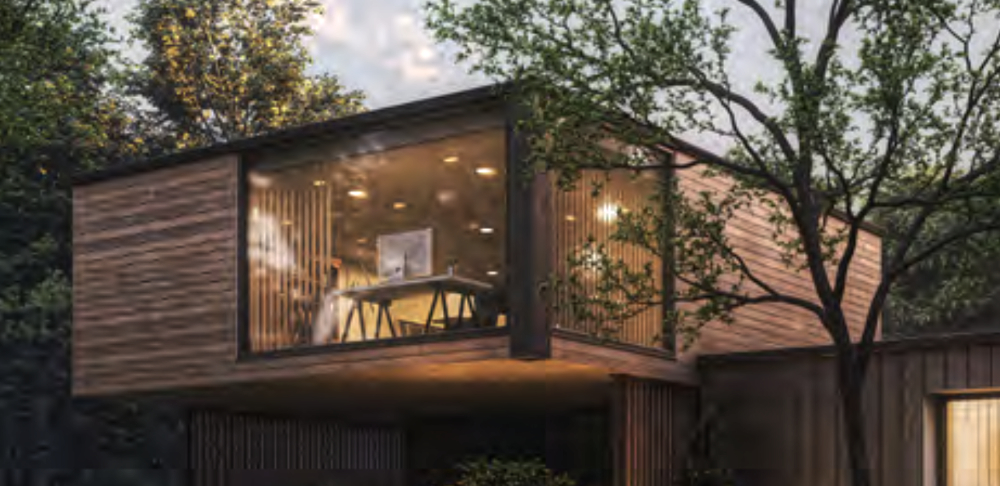Flat roof designs versus pitched roof designs
[edit] Why flat roofs sometimes have the edge over pitched roof design
In residential or commercial environments, properties are generally covered with a pitched or flat roof design. Although different in style, both are designed to carry out the same task: safeguarding a building against the elements whilst contributing to the creation of a warm, thermally efficient interior. But why do some property owners opt for a flat roof rather than a pitched roof design or pitched roof extension?
Firstly, the title ‘flat roof’ is slightly misleading. No roof is completely flat, as each one must contain a slope, however slight, to allow effective rainwater run-off. If water is not properly dispersed from a flat roof, its weight will lead to deflections forming and increase the risk of ponding. This additional weight may increase the likelihood of a worst- case scenario: water-based structural damage, which is one of the most common forms of building failure.
[edit] Advantages of a flat roof over a pitched roof design
Although suitable for a range of environments and applications, flat roofs have greater prominence on commercial or publicly funded buildings including schools and hospitals. In these areas, the advantages of a flat roof over a pitched roof design are more pronounced for several reasons. Commercial roofing spaces tend to be much larger than residential settings and contain multiple levels, eliminating a sloped or pitched roof design as an option. Bearing less weight than a pitched roof design or pitched roof extension, a flat roof is more suitable for the safe, convenient placement of air conditioning units and other plant materials that are crucial to high-occupancy buildings. The ease with which flat roofs are accessed and upkept in comparison to pitched roof designs or pitched roof extensions is enhanced by their ability to accommodate edge protection and ladder systems. This reduces the safety risk during routine maintenance visits.
[edit] Pitched roof construction details
A roof’s pitch is measured by the vertical rise in relation to horizontal run. There are two types of pitches: steep and shallow. A steep slope is between 45 and 60 degrees, while a shallow pitched roof design is between 20 and 45 degrees. The steepness or depth of a roof’s slope affects how much water will run off it, so it is important for homeowners to know their roof’s roof pitch.
[edit] Pitched roof verses flat roof
Pitched roofs, due to their height and visibility, are more of a striking statement in terms of aesthetics. However, flat roofs, on account of their rapid, cost-effective installation, easier maintenance and proven, long-term performance, find greater favour in commercial settings than a pitched roof design. That is not to say flat roofs can’t look as smart as they perform. Such are the advances in the technical composition of roof insulation and waterproofing membranes that flat roofs can provide a building with a crisp, uniform finish that obscures less eye-catching details, such as solar PV panels and plant details, from being visible at ground level.
Flat roofs are typically more cost-effective to install than a pitched roof design or pitched roof extension. This cost-efficiency is enhanced by flat roofs requiring less maintenance to uphold performance, although twice a year inspection is still needed. A pitched roof design or extension might be considered more suitable for areas subject to heavy snowfall or rain due to their greater pitch allowing faster shedding of water.
[edit] Tapered insulation: a facilitator to successful flat roof installation
Tapered insulation is an effective way of creating falls to provide effective water run-off. It is an increasingly popular method of keeping a flat roof dry and warm and securing its long-term performance. Achieving such an outcome requires good planning and specification, all of which can be dealt with by experts in flat roof and tapered roof insulation.
This article appears in the AT journal issue 150, winter 2024 as 'Why flat roofs sometimes have the edge over pitched roof design' written by James Wilkinson, Design Team Manager, Gradient.
--CIAT
[edit] Related articles on Designing Buildings
Featured articles and news
Latest Build UK Building Safety Regime explainer published
Key elements in one short, now updated document.
UKGBC launch the UK Climate Resilience Roadmap
First guidance of its kind on direct climate impacts for the built environment and how it can adapt.
CLC Health, Safety and Wellbeing Strategy 2025
Launched by the Minister for Industry to look at fatalities on site, improving mental health and other issues.
One of the most impressive Victorian architects. Book review.
Common Assessment Standard now with building safety
New CAS update now includes mandatory building safety questions.
RTPI leader to become new CIOB Chief Executive Officer
Dr Victoria Hills MRTPI, FICE to take over after Caroline Gumble’s departure.
Social and affordable housing, a long term plan for delivery
The “Delivering a Decade of Renewal for Social and Affordable Housing” strategy sets out future path.
A change to adoptive architecture
Effects of global weather warming on architectural detailing, material choice and human interaction.
The proposed publicly owned and backed subsidiary of Homes England, to facilitate new homes.
How big is the problem and what can we do to mitigate the effects?
Overheating guidance and tools for building designers
A number of cool guides to help with the heat.
The UK's Modern Industrial Strategy: A 10 year plan
Previous consultation criticism, current key elements and general support with some persisting reservations.
Building Safety Regulator reforms
New roles, new staff and a new fast track service pave the way for a single construction regulator.
Architectural Technologist CPDs and Communications
CIAT CPD… and how you can do it!
Cooling centres and cool spaces
Managing extreme heat in cities by directing the public to places for heat stress relief and water sources.
Winter gardens: A brief history and warm variations
Extending the season with glass in different forms and terms.
Restoring Great Yarmouth's Winter Gardens
Transforming one of the least sustainable constructions imaginable.
























